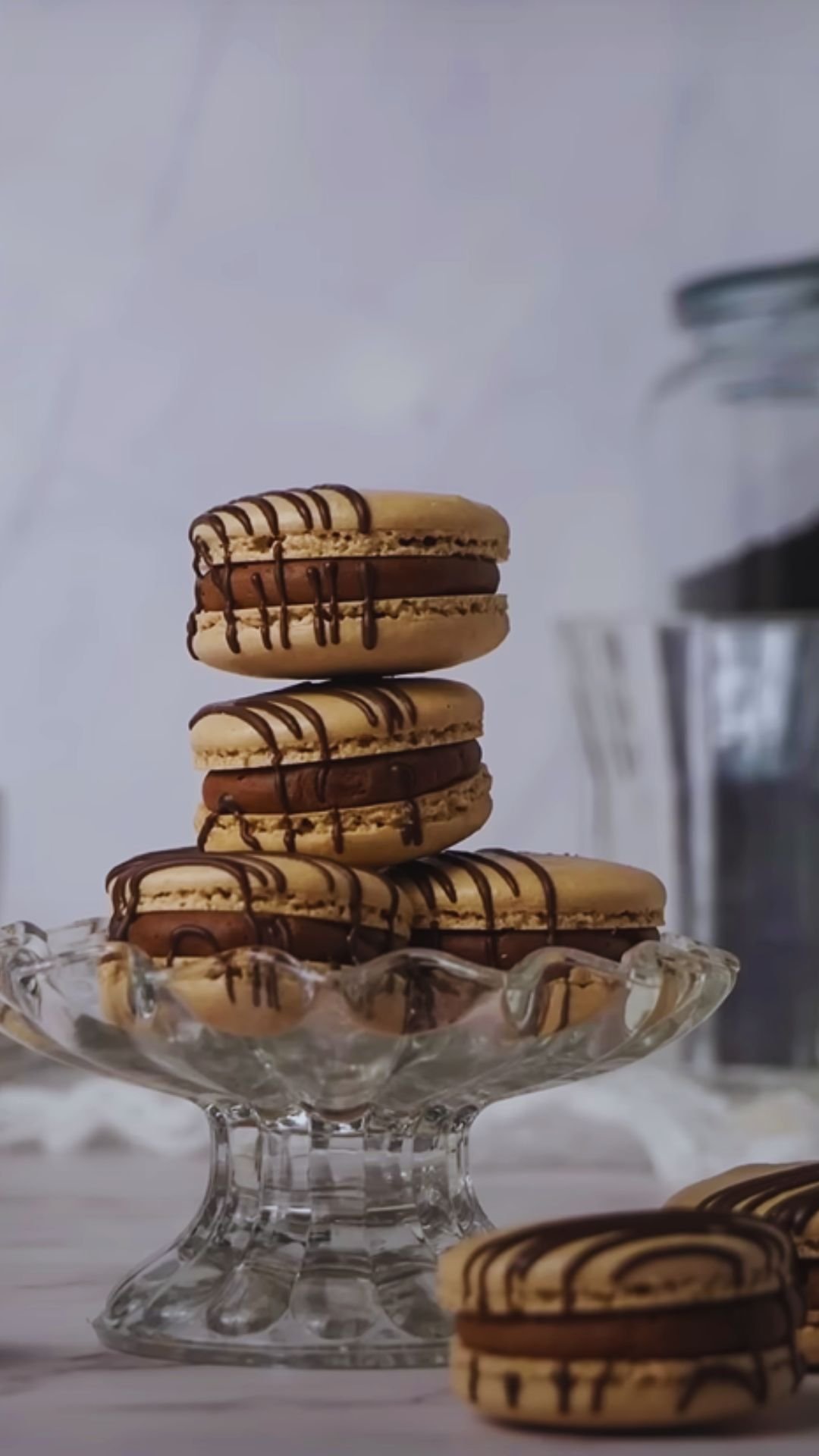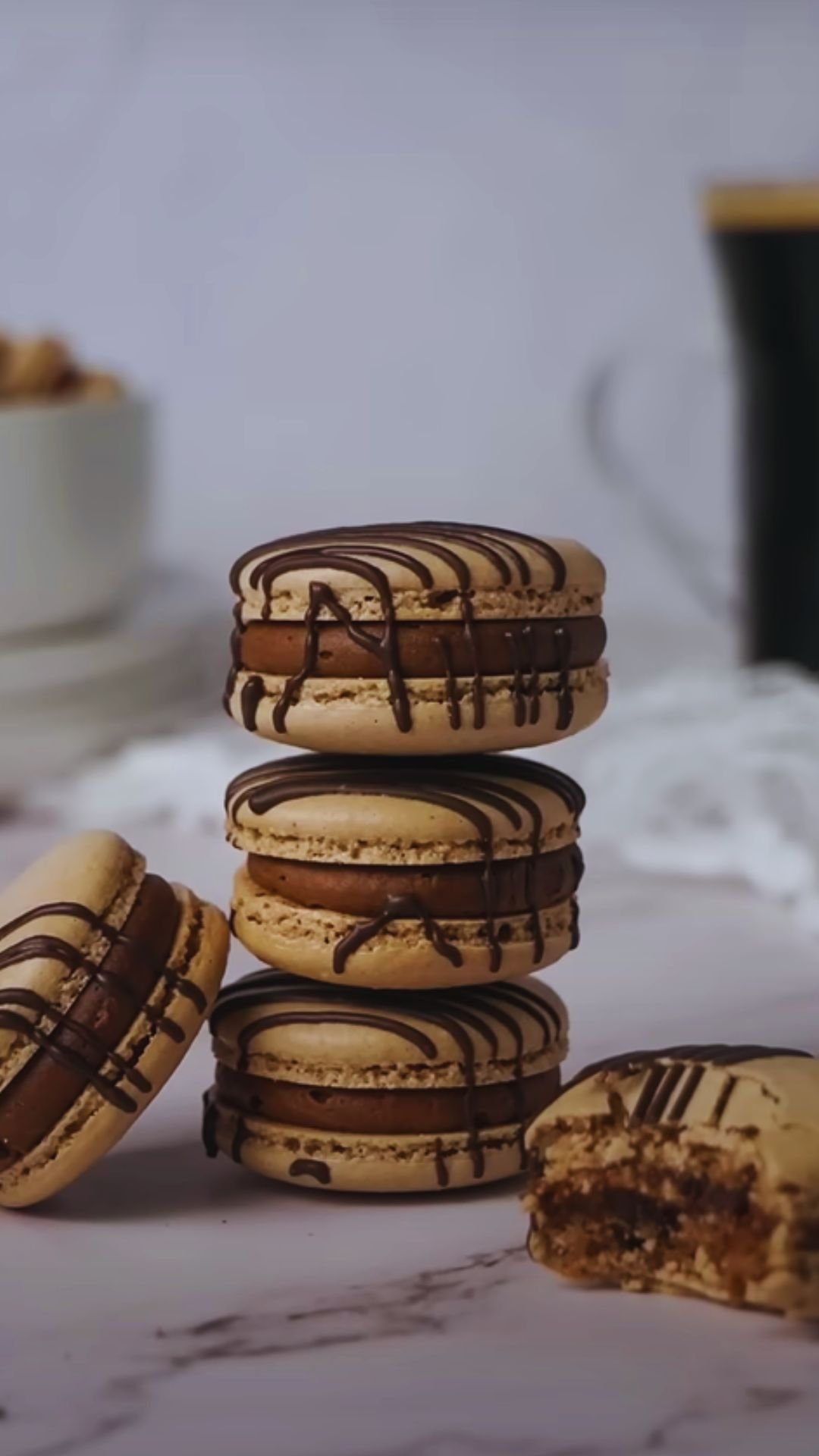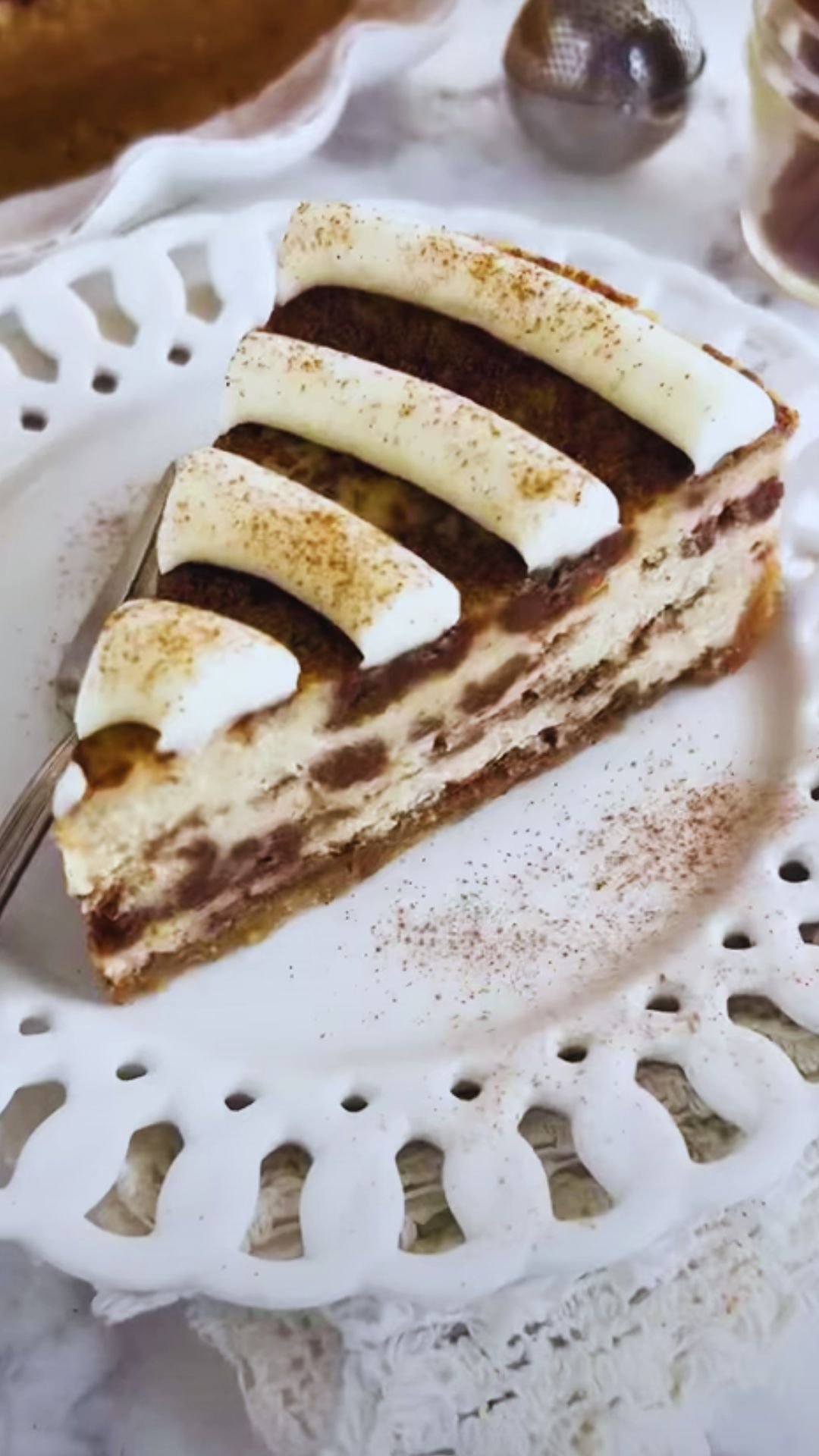Have you ever gazed longingly at those perfect little sandwich cookies in a French bakery window? The ones with smooth, shiny tops, frilly “feet” around the edges, and delicious fillings peeking out from the middle? Those are French macarons, and I’m here to tell you that yes, you absolutely can make these gorgeous treats in your own kitchen!
I’ll be honest—my first attempt at macarons was a complete disaster. Cracked tops, no feet, and a taste that was… well, let’s just say it wasn’t what I was going for. But after many (many!) batches and lots of learning, I’ve figured out the secrets to creating these delicate delights at home.
In this guide, I’ll walk you through everything you need to know about making French macarons from scratch. We’ll cover the essential techniques, troubleshooting, and all those little details that make the difference between macaron success and macaron sadness.
What Are French Macarons?
French macarons are delicate almond meringue sandwich cookies with a crisp exterior, chewy interior, and flavorful filling. Unlike their coconut cousins (macaroons with two O’s), French macarons (one O) are made with almond flour, egg whites, and sugar.
What makes these treats so special is their unique texture and appearance:
- A smooth, glossy top shell
- Distinctive “feet” (the frilly edges at the base)
- A slightly chewy interior
- A flavorful filling sandwiched between two cookies
French macarons have been popular in France since the early 20th century, but they’ve exploded in popularity worldwide over the past decade. They’re known for their versatility in flavors and colors, making them perfect for everything from elegant dessert tables to thoughtful homemade gifts.
Essential Ingredients & Equipment
Ingredients
For classic French macaron shells, you’ll need just four main ingredients:
- Almond flour: This gives macarons their distinctive nutty flavor and texture. Always use blanched (skinless) almond flour for the smoothest shells.
- Powdered sugar: Provides sweetness and structure to the shells.
- Egg whites: The foundation of the meringue that gives macarons their unique texture.
- Granulated sugar: Stabilizes the meringue and adds sweetness.
For additional flavor and color:
- Gel food coloring: Liquid food coloring contains too much moisture for macarons, so gel coloring is essential.
- Flavor extracts: Vanilla, almond, or other extracts can enhance your shells.
For fillings, options include:
- Buttercream
- Ganache
- Jam or curd
- Cream cheese frosting
Equipment
Having the right tools makes macaron-making much easier:
- Kitchen scale: Precision matters tremendously for macarons. Measuring by weight rather than volume is essential.
- Fine-mesh sieve: For sifting the dry ingredients to remove lumps.
- Stand mixer or hand mixer: To whip the egg whites properly.
- Silicone spatula: For folding the batter without deflating it too much.
- Piping bags and round tips: For consistent, perfectly shaped macarons.
- Baking sheets: Heavy-duty sheets that won’t warp in the oven.
- Silicone mats or parchment paper: Provides the perfect non-stick surface.
- Oven thermometer: Most home ovens run hot or cold, which can ruin macarons.
Understanding the Science Behind Macarons
What makes macarons so tricky is that they rely on a delicate balance of chemistry and technique. Understanding the science helps you troubleshoot when things go wrong:
| Factor | Scientific Role | Impact on Macarons |
|---|---|---|
| Protein in egg whites | Creates structure when whipped | Provides the stability needed for proper shells |
| Sugar | Stabilizes meringue | Prevents collapse and creates structure |
| Almond flour | Provides fat and protein | Creates the chewy texture and distinctive flavor |
| Powdered sugar | Acts as a dry ingredient | Balances moisture content and adds structure |
| Folding technique | Reduces air in batter | Determines final consistency and texture |
| Resting period | Allows skin formation | Creates the signature feet and smooth top |
| Oven temperature | Controls rise and structure | Affects feet development and prevents hollow shells |
When you understand these relationships, you’ll be better equipped to diagnose issues like hollow shells, cracked tops, or missing feet.
Step-by-Step Macaron Making Process
Basic French Macaron Shell Recipe
Here’s my tried-and-true recipe for basic French macaron shells:
Ingredients:
- 100g egg whites (about 3 large eggs), room temperature
- 100g granulated sugar
- 200g powdered sugar
- 110g almond flour
- Pinch of salt
- Gel food coloring (optional)
- 1/4 tsp extract for flavoring (optional)
Step 1: Prepare Your Workspace and Ingredients

- Line baking sheets with silicone mats or parchment paper.
- Prepare piping bags with round tips.
- Measure all ingredients precisely using a kitchen scale.
- Ensure your mixing bowls are completely clean and free from any grease.
- Check that your egg whites are at room temperature (aged egg whites work even better—separate them 24-48 hours in advance).
Pro tip: Wipe your mixing bowl with a bit of lemon juice or white vinegar to remove any lingering grease that might prevent your egg whites from whipping properly.
Step 2: Sift the Dry Ingredients
- Sift the almond flour and powdered sugar together through a fine-mesh sieve.
- Discard any large pieces that don’t pass through the sieve.
- Sift at least twice for the smoothest shells.
Common mistake: Skipping the sifting step can lead to lumpy, uneven shells. Take your time here—it’s worth it!
Step 3: Whip the Meringue
This step is crucial for successful macarons:
- In a clean bowl, start whipping the egg whites with a pinch of salt on medium speed.
- Once they become foamy, gradually add the granulated sugar while continuing to whip.
- Continue whipping until stiff peaks form—the meringue should stand straight up when you lift the beater.
- Add gel food coloring and/or extract at this point if using.
Meringue test: You’ll know your meringue is ready when it forms a stiff peak that doesn’t flop over, and you can turn the bowl upside down without it falling out.
Step 4: Macaronage (The Folding Technique)
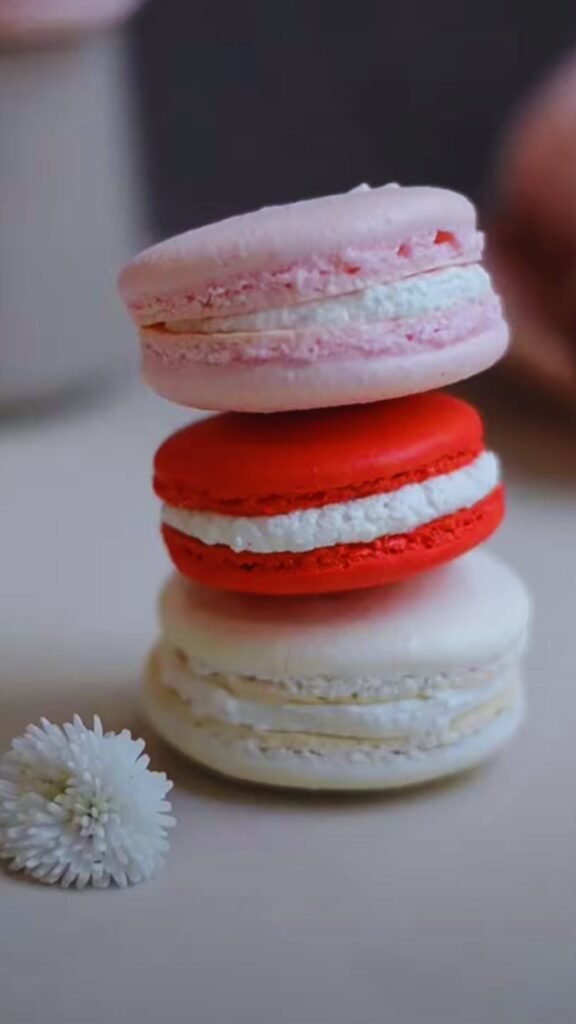
This might be the most critical step in the entire process:
- Add one-third of the sifted dry ingredients to the meringue.
- Using a silicone spatula, fold gently by scraping around the sides and cutting through the middle.
- Add the remaining dry ingredients in two more additions, folding each time.
- Continue folding until the batter reaches the right consistency—it should flow like lava and form a “figure 8” without breaking.
The ribbon test: When you lift your spatula, the batter should flow off in a ribbon and disappear back into the rest of the batter within about 20-30 seconds.
Step 5: Pipe the Macaron Shells
- Transfer the batter to a piping bag fitted with a round tip.
- Pipe 1.5-inch rounds onto your prepared baking sheets, keeping them about 2 inches apart.
- Hold the piping bag perpendicular to the baking sheet for the most consistent shapes.
- Once all shells are piped, firmly tap the baking sheet against the counter several times to remove air bubbles.
Template tip: For beginners, place a template with circles under your parchment paper (remove before baking) to ensure consistent sizing.
Step 6: Rest the Shells
This step allows a skin to form on top of the macarons:
- Let the piped shells rest at room temperature until they form a dry skin.
- Test by gently touching the top of a shell—your finger should not stick to it.
- Resting typically takes 30-60 minutes, depending on humidity.
Humidity note: On very humid days, you may need to rest your macarons longer or use a fan to help dry the tops.
Step 7: Bake the Shells
- Preheat your oven to 300°F (150°C) with an oven thermometer to verify the temperature.
- Bake one tray at a time for 17-18 minutes.
- The macarons are done when they don’t wiggle when you gently touch the top.
- Allow them to cool completely on the baking sheet before removing.
Oven tricks: Every oven is different. Some bakers have success with starting at a higher temperature (325°F/165°C) for the first 5 minutes, then reducing to 300°F/150°C for the remainder of the baking time.
Step 8: Fill and Mature
- Once cooled, match shells of similar sizes.
- Pipe filling onto one shell of each pair.
- Sandwich with the matching shell, pressing gently.
- Store filled macarons in an airtight container in the refrigerator for 24 hours to “mature.”
Maturation: This resting period allows moisture from the filling to slightly soften the shells, creating that perfect chewy-crisp texture.
Common Fillings for French Macarons
The filling is your opportunity to get creative! Here are some classic options:
Classic Vanilla Buttercream
Ingredients:
- 115g unsalted butter, softened
- 240g powdered sugar, sifted
- 1-2 Tbsp heavy cream
- 2 tsp vanilla extract
- Pinch of salt
Instructions:
- Beat butter until creamy.
- Gradually add powdered sugar, mixing on low speed.
- Add vanilla, salt, and enough cream to reach desired consistency.
- Beat on medium-high for 3-5 minutes until light and fluffy.
Chocolate Ganache
Ingredients:
- 120g high-quality dark chocolate, chopped
- 120g heavy cream
- Pinch of salt
Instructions:
- Heat cream until just simmering.
- Pour over chocolate and let sit for 1 minute.
- Stir until smooth and shiny.
- Allow to cool and thicken before using.
Lemon Curd
Ingredients:
- 3 large eggs
- 150g granulated sugar
- Zest of 2 lemons
- 80ml fresh lemon juice
- 85g unsalted butter, cubed
Instructions:
- Whisk eggs, sugar, zest, and juice in a saucepan.
- Cook over medium-low heat, stirring constantly until thickened.
- Remove from heat and stir in butter until melted.
- Strain and cool completely before using.
Troubleshooting Common Macaron Problems
Even experienced bakers encounter macaron issues. Here’s how to solve the most common problems:
| Problem | Possible Causes | Solutions |
|---|---|---|
| No feet | Batter too wet, insufficient resting time, oven too cool | Ensure proper macaronage, increase resting time, check oven temperature |
| Hollow shells | Overbeaten meringue, oven temperature issues | Beat meringue just to stiff peaks, adjust oven temperature |
| Cracked tops | Undermixed batter, oven too hot | Ensure proper macaronage, reduce oven temperature |
| Uneven feet | Uneven heat distribution, drafts in oven | Rotate pan halfway through baking, keep oven door closed |
| Wrinkled shells | Too much moisture, overbaked | Adjust recipe ratios, reduce baking time |
| Browned shells | Oven too hot | Lower temperature, position rack further from heat source |
| Sticking to mat | Underbaked | Increase baking time slightly |
Remember that even “failed” macarons usually taste delicious! Don’t get discouraged if your first few batches aren’t perfect.
Creative Flavor Combinations
Once you’ve mastered the basic technique, the flavor possibilities are endless:
- Chocolate-Raspberry: Chocolate shells with raspberry buttercream
- Pistachio-Rosewater: Pistachio shells with rosewater buttercream
- Lemon-Blueberry: Lemon shells with blueberry buttercream
- Earl Grey-Lavender: Earl Grey tea-infused shells with lavender buttercream
- Salted Caramel: Vanilla shells with salted caramel filling
- Matcha-White Chocolate: Matcha shells with white chocolate ganache
- Coffee-Hazelnut: Coffee-infused shells with Nutella filling
- Coconut-Lime: Coconut shells with lime curd filling
Storing and Serving Your Macarons
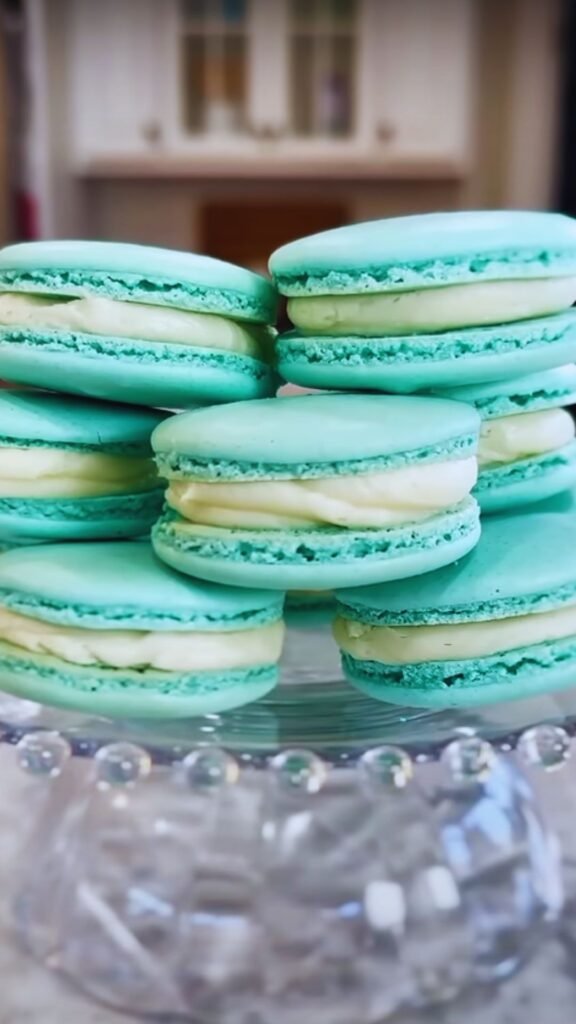
Storage Tips
- Unfilled shells: Store in an airtight container at room temperature for up to 5 days.
- Filled macarons: Keep refrigerated in an airtight container for 3-7 days, depending on the filling.
- Freezing: Most macarons freeze beautifully! Place in an airtight container with parchment between layers and freeze for up to 3 months. Thaw in the refrigerator overnight before serving.
Serving Suggestions
- Allow refrigerated macarons to come to room temperature for about 20-30 minutes before serving for the best texture and flavor.
- Arrange on a tiered stand for an impressive dessert display.
- Package in clear gift boxes tied with ribbon for homemade gifts.
- Serve with coffee, tea, or hot chocolate for a perfect pairing.
- Create a macaron tasting plate with several flavors for a special dessert experience.
Frequently Asked Questions
Why do I need to age my egg whites? Aging egg whites (leaving them at room temperature for 24-48 hours) allows some of the moisture to evaporate and proteins to relax, resulting in a more stable meringue. While not absolutely necessary, it can improve your chances of success.
Can I make macarons without a kitchen scale? I strongly recommend using a scale for macarons. Volume measurements simply aren’t precise enough for these finicky cookies. A good digital kitchen scale is an affordable investment that will dramatically improve your baking overall.
How do I know when my batter is properly mixed? The perfect macaron batter should flow like slow-moving lava. When you lift your spatula, the batter should fall in a ribbon and form a figure-8 without breaking. After about 20-30 seconds, the ribbon should melt back into the batter.
Why do my macarons always crack on top? Cracking usually happens when there’s too much air trapped in the batter or when the oven temperature is too high. Make sure you’re tapping the trays firmly after piping and check your oven temperature with a separate thermometer.
Is it necessary to let the piped macarons rest before baking? For classic French macarons, yes. The resting period allows a skin to form on top, which helps create the signature feet. In very humid conditions, you may need to rest them longer or use a fan to help the process.
My macarons are sticking to the baking sheet. What went wrong? Likely undercooked. Next time, bake them a minute or two longer. If they’re properly baked, they should release easily once completely cooled.
Can I make macarons in advance for a special event? Absolutely! Macarons actually improve with time as the flavors meld and the texture perfects. Make them 2-3 days ahead and store them in the refrigerator.
Final Tips for Macaron Success
After making countless batches of macarons, here are my top tips for success:
- Be precise: Use a scale for all measurements.
- Be patient: Don’t rush any part of the process.
- Control your environment: Try to bake on less humid days when possible.
- Practice makes perfect: Each batch will teach you something new.
- Take notes: Record the specifics of each batch (weather conditions, timing, temperature) to learn what works in your kitchen.
- Watch for visual cues: Learn to recognize when your meringue is properly whipped and when your batter is properly folded.
- Keep it clean: Ensure all equipment is completely grease-free.
- Stay consistent: Once you find a method that works, stick with it.
Remember, even professional pastry chefs sometimes struggle with macarons! Don’t be discouraged by initial failures—each batch brings you closer to perfection.
Making French macarons at home is like learning a beautiful dance—it takes practice, patience, and precision. But once you’ve mastered the steps, you’ll be creating these elegant little treats with confidence and joy. I hope this guide helps you on your macaron journey!
Happy baking!
